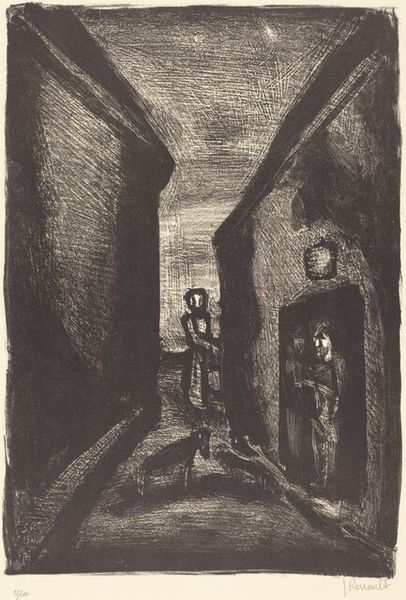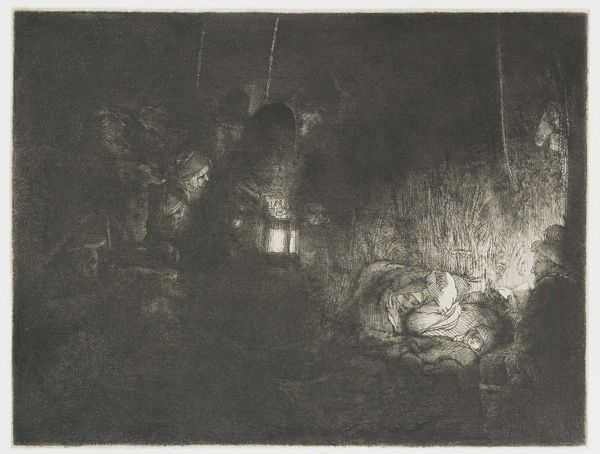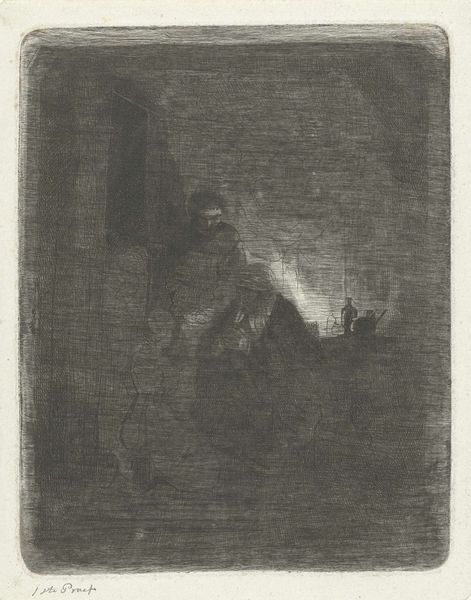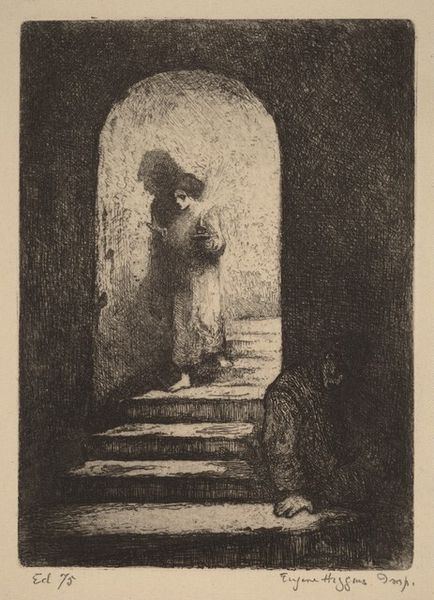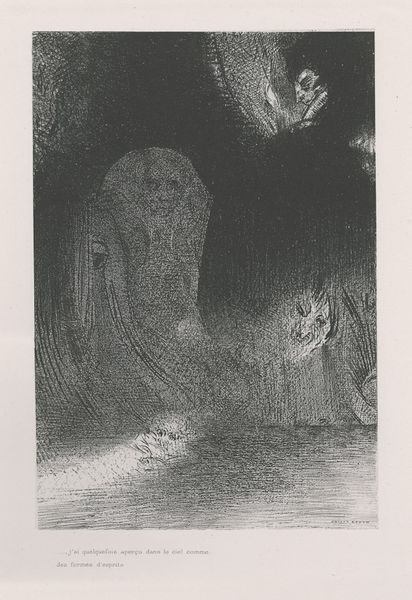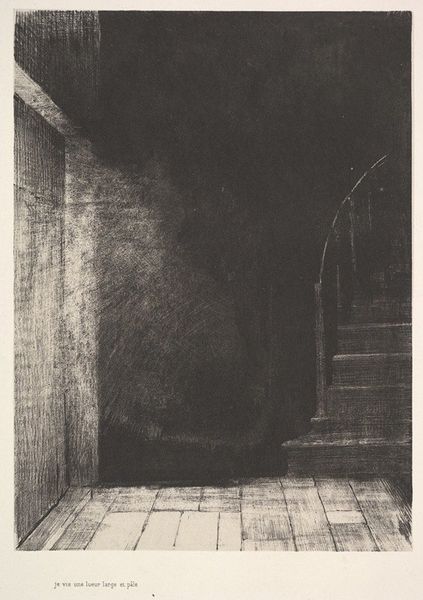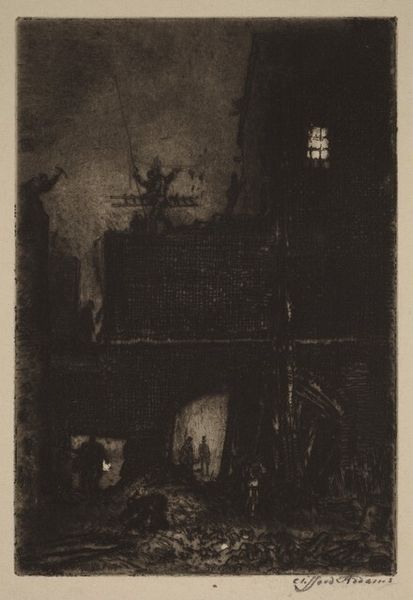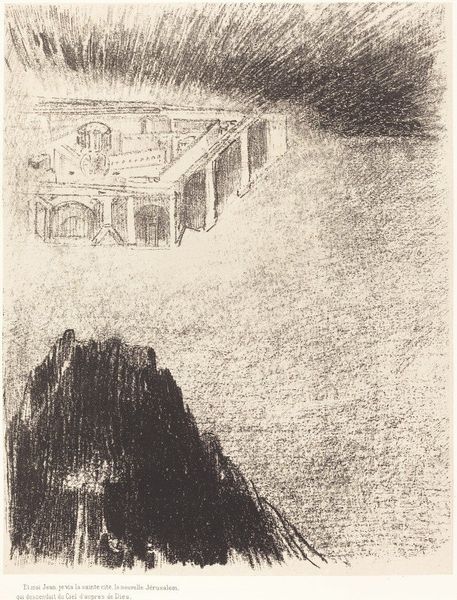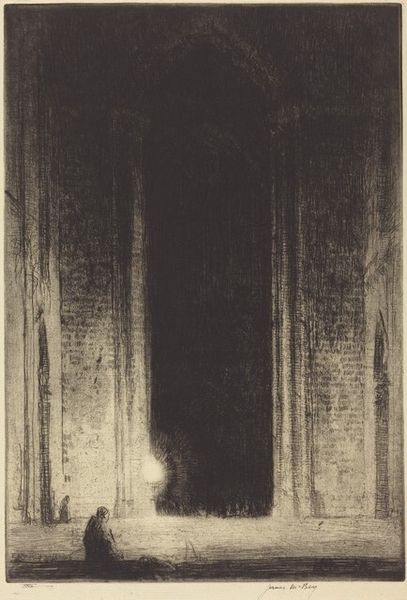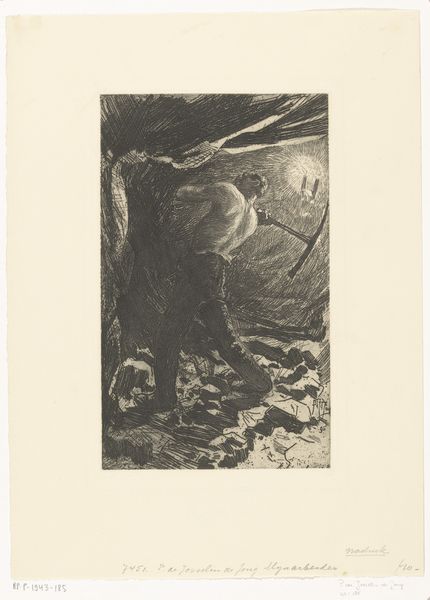
drawing, print, dry-media, graphite
#
portrait
#
drawing
# print
#
pencil sketch
#
landscape
#
dry-media
#
symbolism
#
graphite
Copyright: Public Domain: Artvee
Odilon Redon made this lithograph, "Lueur precaire, une tete a l’infini suspendue" in France, probably in the 1880s or 90s. It shows us a head floating in darkness, a scene of dreams or nightmares. Redon emerged from a fin-de-siècle culture of Symbolism and Idealism, a time when artists turned inward, rejecting Realism's focus on the observable world. The image, created with the transfer of greasy ink to a stone plate, plays with light and darkness. The cultural references are manifold, including the spiritualism then gripping Europe, and new psychological models that privileged the role of the unconscious. This new, modern self, however, emerges not through direct experience but indirectly. As a social historian, I find myself asking how the institutions of art shaped Redon’s career. He was accepted into the official Salon, but he also exhibited with the more radical Société des Artistes Indépendants. To understand Redon, we can consult exhibition reviews and artists' letters. Such historical context is essential to understanding art’s complex relationship to its time.
Comments
No comments
Be the first to comment and join the conversation on the ultimate creative platform.

